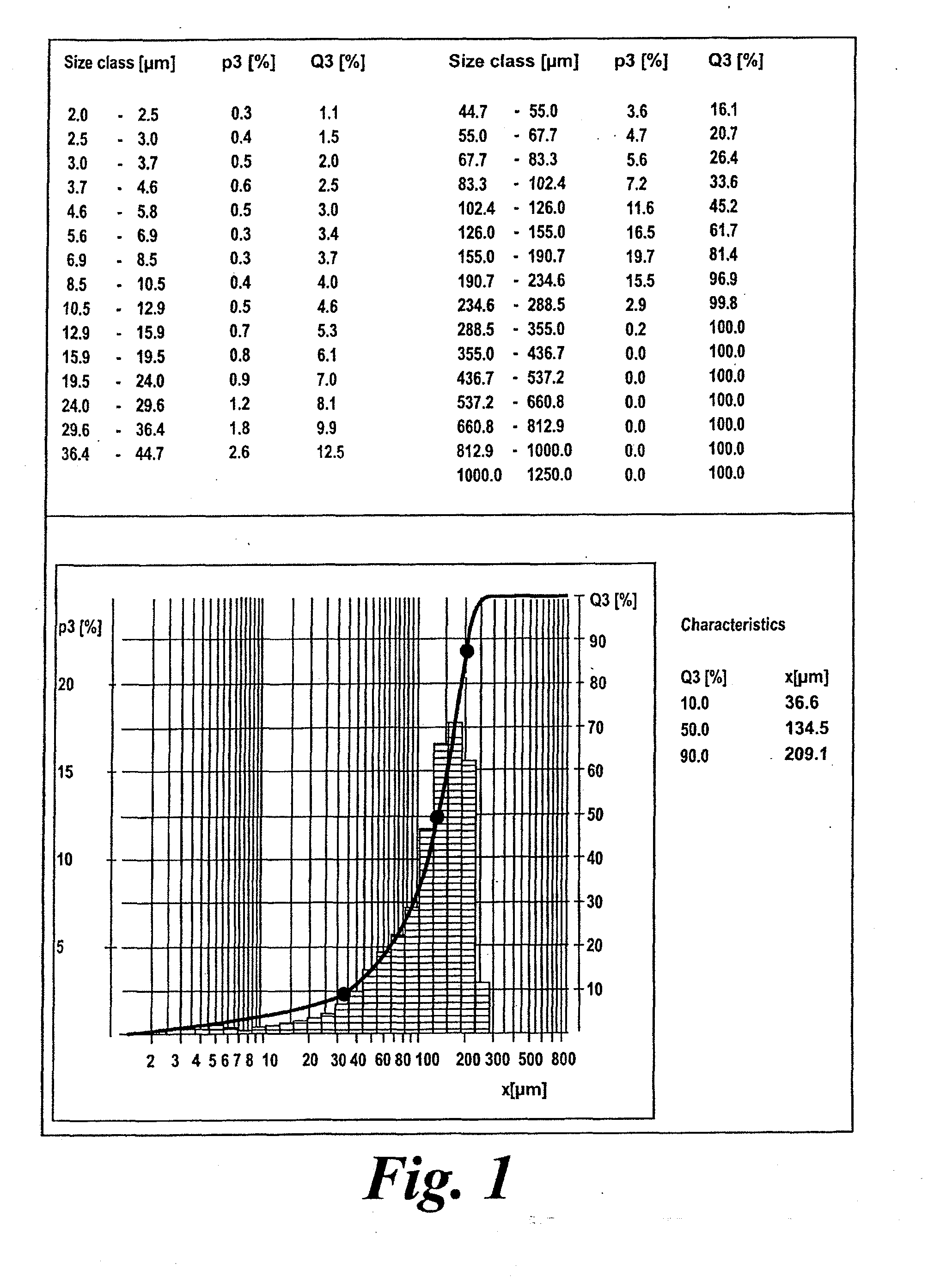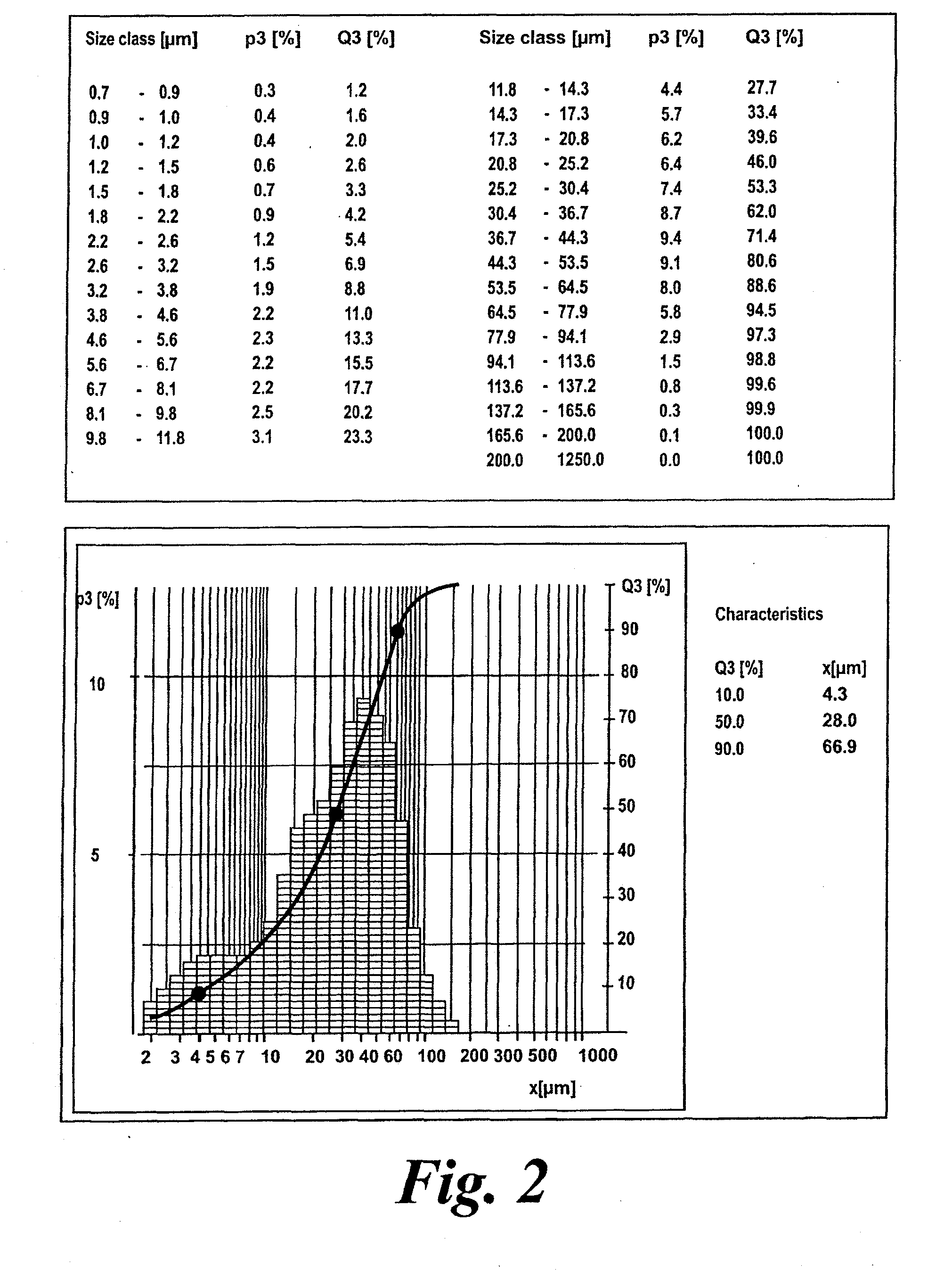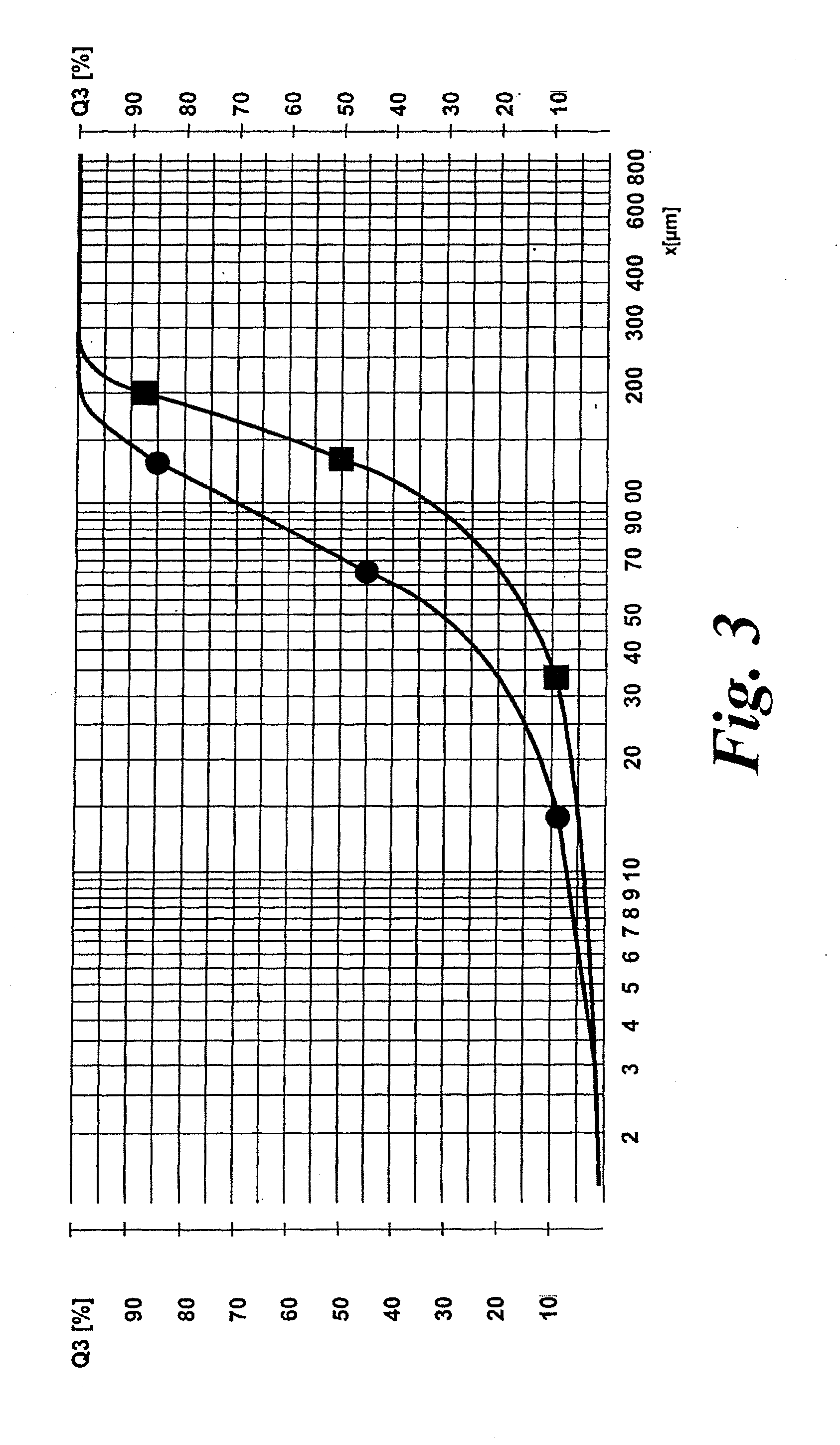[0016]Microfluidising instruments (microfluidisers), have previously been used in the manufacture of paints and inks. However, Applicants have now surprisingly found that microfluidising instruments may also be used to produce CMP of a phagocytosable size, and thus CMP produced using a microfluidising instrument are appropriate for use as a pharmaceutical and for formulation in pharmaceutical compositions. In particular, Applicants have found that advantages of using a microfluidising instrument to produce CMP include the ability to
handle large volumes and the ease of scale up for industrial manufacturing needs; GMP protocols have been developed; it produces a homogenous product with greater control over particle size than other methods; and it gives a greater yield of CMP than other methods.
[0018]Essentially, microfluidising instruments suitable for use in the invention reduce particle size by propelling a product (e.g. a suspension) through geometrically fixed micro channels at
high pressure, e.g. 20,000 to 30,000 psi, and
high velocity, e.g. in excess of 500 ms−1. This provides an extremely focused interaction zone. As the product passes through the microchannels, forces produced by the
high pressure act upon the product to reduce the size of particles in the product, including shear forces, through deformation of the product
stream occurring from contact with the walls of the microchannels;
impact forces, through collisions occurring when the
high velocity product
stream impinges upon itself; and
cavitation forces, through formation and collapse of vapour cavities within the product
stream.
[0024](b) passing the suspension through a microfluidising instrument to reduce the
average diameter of the particles in the collection of particles to the desired
average diameter;
[0041]Increasing the operating pressure of the microfluidising instrument, i.e. the pressure at which the suspension is passed through the microfluidising instrument, and / or adjusting the size e.g.
diameter, and / or geometry of the microchannels may affect, e.g. reduce, the number of times the suspension must be passed through the microfluidising instrument to reduce the
average diameter of the particles in the collection to the desired average
diameter. Applicants have found that the use of an operating pressure and a size and geometry of microchannels such that the suspension is passed through the microfluidising instrument at least 7 times or more, more preferably at least 9 times or more, is optimal for minimising overheating and / or blockage of the microfluidising instrument. The person skilled in the art is able to select such an appropriate operating pressure and size and geometry of the microchannels.
[0043]The method may also comprise sieving the collection of particles prior to passing the particles through the microfluidising instrument. A collection of particles may include particles that are large enough to block the microchannels, e.g. particles having a
diameter of 50 μm or larger, and thus sieving the collection of particles prior to passing the particles though the microfluidising instrument would reduce the possibility of particles blocking the microchannels. Sieving also allows the starting size of the particles to be reduced. This can be advantageous, as Applicants have found that the yield of microparticles increases as the size of the starting particles decreases. Thus, preferably the method comprises sieving the collection of particles prior to making the suspension and / or passing the collection of particles through the microfluidising instrument. Preferably the
sieve has a pore size of 200 μm or less, 150 μm or less, or 100 μm or less. Most preferably the
sieve has a pore size of 126 μm.
[0058]Applicants also compared the therapeutic
efficacy of CMP produced by
dry powder ball milling with CMP produced using a microfluidising instrument. However, Applicants found that the CMP produced using a microfluidising instrument was more effective than CMP produced by
dry powder ball milling in treating
asthma in mice. In particular, Applicants found that the CMP produced using a microfluidising instrument resulted in greater reduction in alveolar eosinophils, indicating that treatment reduced the level of
asthma, and in a greater reduction of cellular
inflammation in the lungs. In addition, Applicants have also shown that CMP produced using a microfluidising instrument provides protection against
viral infection.
 Login to View More
Login to View More 


